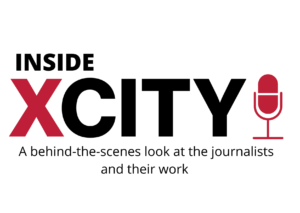
Let’s be honest. Financial journalism is often seen as a bit boring. Whether it’s share prices or the same stock image of a piggy bank over and over, there are many factors that deter your average digital-minded millennial. XCity Plus reports on the latest innovations that financial journalists are using to reach a wider audience and keep the reader switched on. Let’s talk money.
Email newsletters
With social media minimising the importance of homepages and front covers, most readers are dictated by what appears in their feeds. In finance, where there is usually one big story of the day, this can be a real problem. How do you make sure the reader knows what’s most important?
Enter the email newsletter. Daily services like Finimize, founded at the end of 2015, have this down to a fine art, breaking financial stories into a few short paragraphs ideal for your commute. Quartz also has a daily email briefing. While the main site features longer analyses and insights, the email is a digestible heads-up on the big stories of the day. Free subscription services like these are cutting through the noise of digital information overload.
Podcasts
The key to any successful podcast is good storytelling, and what could make for a better narrative than the often dramatic rise and fall of the economy? NPR’s Planet Money and economics/journalism hybrid Freakonomics are both podcasts that prove you can make lively, funny and fascinating content about finance for audio.
Both shows get behind big issues in the news and find their personal and sometimes bizarre aspects. It’s all neatly bundled into an easily understandable mesh of entertainment and education. What’s more, it’s clear there’s an audience for this: figures from Edison Research show that podcast listening is growing 25 per cent year each year. Almost two thirds (65 per cent) of Planet Money’s listeners are under 35.
Hot takes
With so many young people getting their news from BBC Breaking News alerts and Twitter, any financial website needs to provide argument as well as fact. Sites like The Billfold and The Financial Diet have taken advantage of this with articles like “Why I wouldn’t marry someone with student loan debt” and “Let’s kill til it’s dead the myth that mom’s salary pays for childcare”. Once you start talking like this, a lot of people realise that money, which they once thought was a dull topic, is something they actually care about deeply.
Video
Attaching a face is one of the easiest ways to make finance journalism more engaging. YouTubers caught onto this long ago, with channels like Sugar Mamma, Marie TV and LaTisha Styles. They talk business, investment and savings in a friendly way, with the tone of a trusted mentor or big sister.
Now, big business media organisations like Bloomberg and The Street make their market insights more exciting through short videos. Online users tend to skim, only reading snippets of an article (you’re doing that right now, aren’t you?) so presenting them with all the information they need in a video that’s only 60 seconds long is hugely valuable for the time-pressed and the easily distracted.
Social media
Anyone producing videos should also be taking advantage of social videos, which autoplay on platforms like Twitter and Facebook, and are clearly subtitled so users don’t have to turn on the sound. But as everyone knows, the big opportunity on social media is to build up a community of loyal followers. On Instagram, the entrepreneur magazine Foundr rarely links to its content. Instead, the publication offers motivational quotes and advice, making followers feel like they are part of a unique network.


















